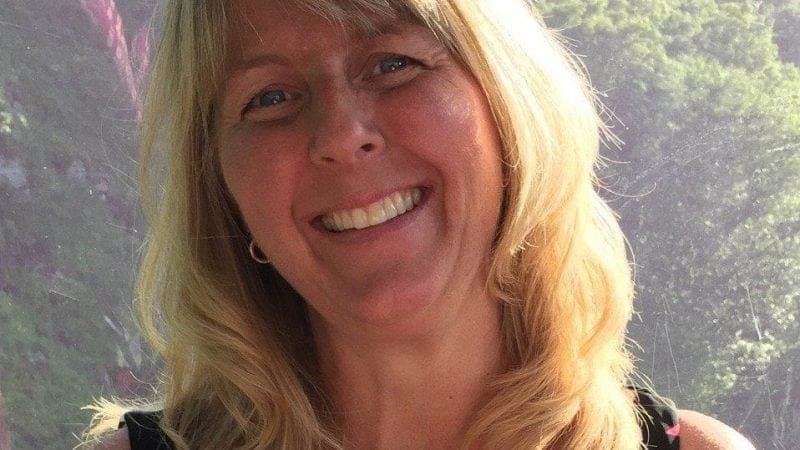By Ellen Gammel
The Fitchburg High School state report came back… Level 3… again. For schools in Massachusetts, this Department of Education label informs us we are in the bottom 20% of schools – definitely a label no school wants. The discouragement and frustration came to the forefront, and then the big question: Why? Why are our scores not improving? Why are our students struggling? And finally, why can’t they just get the answers right? I pondered this thought long and hard for over a year and began to question if students have actually internalized that the sole purpose of their education is simply getting answers right. Have we, as educators and politicians, created that thinking? Where has curiosity gone? If a student’s sole purpose is to get the answer right, then we, as educators, are doing a great disservice to students everywhere. What if we could bring back curiosity and inquiry? Could that shift the paradigm so that students are once again driving their own learning and see value in their education beyond their standardized test scores? If they are driving their own learning – resulting in more engagement – will everything else fall into place? It was during this epiphany and my exploration into theories about inquiry that I discovered the Right Question Institute and the Question Formulation Technique (QFT), and both have changed my teaching practices.
During the summer of 2016, while many teachers were reading the most popular beach novels during summer vacation, I couldn’t put down Make Just One Change by Dan Rothstein and Luz Santana and A More Beautiful Question by Warren Berger. September rolled around, and I was determined to try the QFT with my students at Fitchburg High School, and maybe, just maybe, change their thinking about education. I found myself talking to other teachers, both from within my district and from other school systems, about inquiry and the QFT, and got some feedback that I just couldn’t accept: “Why worry about inquiry if your students struggle to read” or “Your students have bigger problems than answering or asking questions – some don’t know if they will have dinner at night.” Some even supported my original frustrations with feedback such as, “if they can’t get the answer right, how will they even be able to formulate a question.”
This is the thinking that is contributing to the problem and we, as educators, can work to change this thinking and shift to an educational culture that promotes and prioritizes student driven inquiry.
I felt that if students improved their questioning skills that there may be positive results abound. Maybe when they read, they will ask prediction questions, or question a character’s motives. If they didn’t understand an assignment, they would have the confidence to ask for clarification. When they get a little older, they might be moved to get involved in their community and raise questions about improving their town. Someday they will be professionals and parents, and we all know how empowering it is to be able to ask questions in order to be successful in either realm. But, without the skill, the ability, and the confidence to ask questions, what will their academic and personal futures look like? Our students are so much more than correct answers on a standardized test.
So my adventure into the QFT and changing student thinking began on September 6, 2016 – the first week of school – when I used the QFT with two senior, college prep English classes to introduce our unit on Personal Narrative Writing. These are the middle of the road students – not honors, not remedial. Their GPAs range from 0.85 to 3.4, and 80% of them qualify for free/reduced lunch. Some are at risk of not graduating and others have been accepted to multiple colleges. Two-thirds of the students have a home language other than English.
The QFocus: Everybody has a story.
At first students were hesitant, but they soon grasped the concept that they could actually ask questions without judgement (the second rule for producing questions) and they loved it! Of course, there were a handful of what one might call silly questions. A simple reminder to remember the QFocus and students were subtly redirected back to the purpose – to think, inquire, and learn about the QFocus. There were no answers, just questions. For some, this was a relief as they didn’t have to worry about getting the answer wrong. For other students, this was disconcerting as they’ve known nothing but getting answers right or wrong.
But something was different during this process. There were no below grade level readers here. There were no students in poverty. There were no single parent households. There were no second language learners. There were no standardized tests or state labeled levels. There were no excuses. There were just truly curious learners asking questions. All students, no matter what their challenges might be, can ask questions. And, with some guidance and a structure that works, asking questions can move students to the next level of thinking.
The assignment that followed the QFT moved students from the QFocus of “everybody has a story” to actually telling their own story. The questions they generated got them thinking about their own stories, the ones that would become their own personal narrative essay. Questions such as “Can someone affect your story?” “Why do we have a story?” and “Does fate affect your story?” helped students move away from a simple biographical accounting of their lives to a more thoughtful narrative that was introspective. They moved from going through the motions of writing an essay for a grade to thinking deeply about the story they wanted to tell.
No doubt, the first few times using the QFT and encouraging questioning and inquiry were difficult, for the students and me! Students hadn’t worked this way before, so encouragement balanced with expectations, along with practice, practice, practice was necessary. This has resulted in the difficulty waning and comfort with questioning developing – comfort for the students to ask questions and comfort for me to let go of some of the control and allow their questions to flow.
By May of 2017 nearing the end of that school year, my epiphany about the power of questions had revitalized my teaching practices and philosophy. The QFT is a tool that I use regularly, and successfully, across grades and ability levels despite the many challenges Fitchburg High School faces as an urban school district. As educators, we constantly reflect and try new strategies. Sometimes they work, sometimes they don’t. I’ve used the QFT many times since that first week of school, and what I’ve noticed is that the students are shifting their thinking more to inquiry. They embrace the protocol when we use it, and they ask more questions even when we don’t – they ask me, they ask each other. And they ask not to get an answer, but to simply inquire… because they can!
The QFT might not be the solution to all the challenges of education, but I have learned firsthand the power of just one change, and the amazing difference that one change can make for all students.
 Ellen Gammel is the Instructional Technologist at Montachusett Regional Vocational Technical School, a vocational high school in Fitchburg, Massachusetts. Prior to this role, she taught English for 15 years at Fitchburg High School. She is also an adjunct instructor at Mount Wachusett Community College, and both instructed and coordinated the dual enrollment courses between MWCC and FHS for nine years. Ellen firmly believes that both inquiry and technology in the classroom must be embraced, and she has presented a variety of trainings for teachers on these topics. She is the go-to person in her building for all things tech ed related. Outside of school, Ellen has presented training at the Follett Aspen Institute, the MassCUE Annual Conference, and the RQI International Conference. In addition to her experience in education, she has served as a non-scientific community member of the UMass Medical School’s Investigational Review Board which oversees research studies. She has been using the QFT protocol for over year, and is always excited to share how she uses technology to implement the QFT. Ellen has a bachelor’s degree in English from Worcester State University and a master of arts in teaching English from Fitchburg State University. She holds teaching licenses in both English and Instructional Technology, and is a Level 2 Google Certified Educator.
Ellen Gammel is the Instructional Technologist at Montachusett Regional Vocational Technical School, a vocational high school in Fitchburg, Massachusetts. Prior to this role, she taught English for 15 years at Fitchburg High School. She is also an adjunct instructor at Mount Wachusett Community College, and both instructed and coordinated the dual enrollment courses between MWCC and FHS for nine years. Ellen firmly believes that both inquiry and technology in the classroom must be embraced, and she has presented a variety of trainings for teachers on these topics. She is the go-to person in her building for all things tech ed related. Outside of school, Ellen has presented training at the Follett Aspen Institute, the MassCUE Annual Conference, and the RQI International Conference. In addition to her experience in education, she has served as a non-scientific community member of the UMass Medical School’s Investigational Review Board which oversees research studies. She has been using the QFT protocol for over year, and is always excited to share how she uses technology to implement the QFT. Ellen has a bachelor’s degree in English from Worcester State University and a master of arts in teaching English from Fitchburg State University. She holds teaching licenses in both English and Instructional Technology, and is a Level 2 Google Certified Educator.
